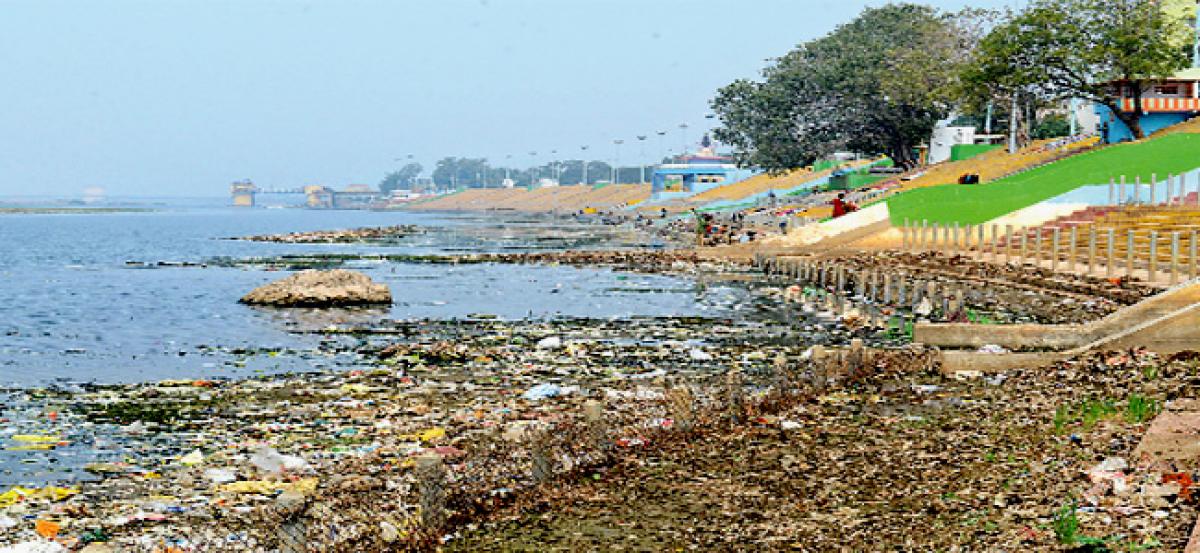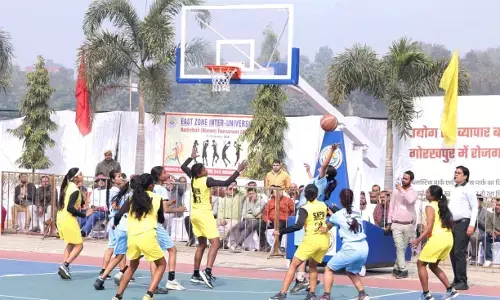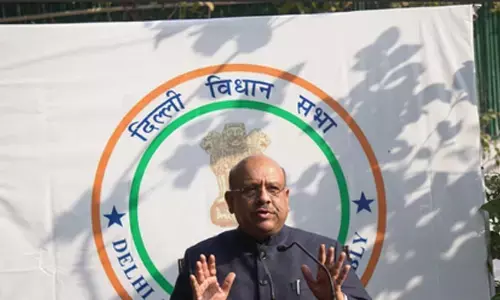Garbage chokes River Godavari

Pollution in River Godavari, the lifeline of the people in this region, has reached alarming levels even as the river has lost its charm.
Rajahmundry: Pollution in River Godavari, the lifeline of the people in this region, has reached alarming levels even as the river has lost its charm. Riverbanks and bunds with mounds of garbage, plastic, and industrial waste present a revolting sight. The entire area stinks with waste choking the river flow at various places.
The river that once provided water for drinking as well as irrigation purposes is now a breeding ground for mosquitoes. “The foul odour emanating from the river due to dumping of industrial waste and untreated sewage is unbearable. The river is not even fit for irrigation now,” opines a denizen.
The locals have alleged that the pollutants being released by the International Paper-Andhra Pradesh Paper Mills Ltd (IP-APPM) is posing threat to River Godavari. The drainage water of paper mill goes into the river causing pollution and risking the lives of people. Responding to the allegation, the IP-APPM stated that its sewage is being treated in lagoons in the islands of the river near Venkata Nagaram.
Speaking to The Hans India, Environmentalist Patanjali Sastry opined that the concept of treating the sewage in the middle of the river is wrong. He said the government can remove the silt which will increase the storage capacity of the river near the Pushkar ghats. He said the government can prevent pollution to a greater extent by desiltation and construction of silt arresting structures in the catchment areas.
Though the statistics released by the Pollution Control Board with regard to PH and chlorine levels seem satisfactory, at ground level these statistics are far from truth. The only Sewage Treatment Plant in the city is not working in a full-fledged manner as it is able to treat only 30 MLD (million litres of water per day) whereas more than 60 MLD of domestic sewage is being generated in the city every day. More than 80 per cent of diseases are water-borne in this region.
It is said that the polluted water is bound to pose health problems to the denizens. The purity of Godavari water, or sanitation on its banks at various Pushkar ghats in the city, is inversely proportional to the sanctity and holiness attached with the river. This is a major cause for concern which has surprisingly been ignored by the government.
The open drainage system is one of the major causes for pollution in River Godavari as 60 MLD of sewage water is being released from 50 divisions of the Municipal Corporation of Rajahmundry. The sewage water is also being released into the river through Ava channel and Nalla Channel from the 630-km long drainage system in the city.
The drainage system which was set up during the British period badly needs modernisation. Sewage water is being released into the river from Nalla channel and the same water is being supplied to the people after filtration, posing serious health problems. Proposals to divert untreated sewage from Nalla channel and Ava channel through pipelines to Dowleswaram have been pending for a long time. It is said that the interceptor drains will facilitate diversion of sewage from illegal sewer outfalls.
This proposal to divert the drainage water has been shelved due to the people’s representatives’ lack of commitment. The volume of garbage including plastic and other chemicals has increased drastically over the years polluting the river. The silt deposits in the river have become a cause for concern for the official machinery.
Even the Central Pollution Control Board has confirmed that the industrial waste is polluting the river and stressed the need for immediate steps to curb pollution even as small, marginal and major industries are releasing industrial waste into the river.
It may be recalled here that the locals have been urging the district administration to initiate measures to arrest the pollution of Godavari River and also highlighted the need for upkeep of the ‘holy’ ambience of the river.
By Samson Raj














